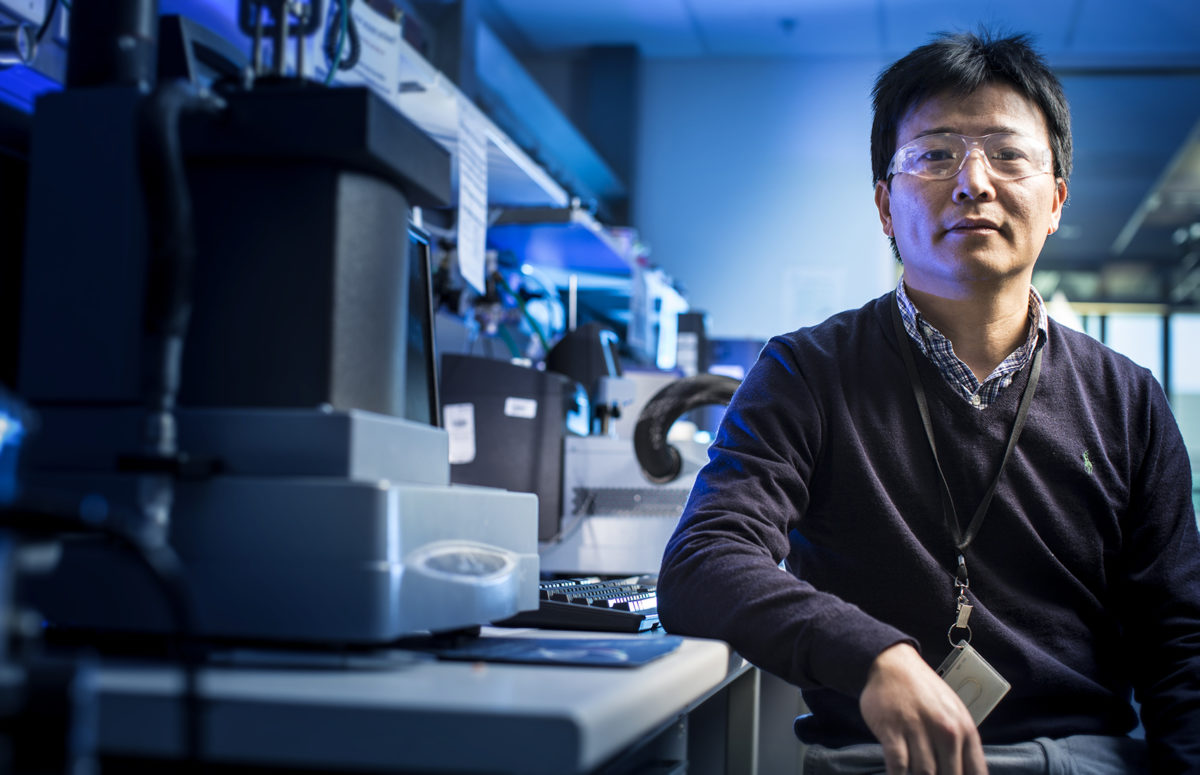News
3D printing bone tissue
Jun 28 2022
ACES and University of Wollongong (UOW) Researchers have reported a technique to prepare ultrathin crystals from bulk non-layered structures in a paper for the journal Matter.

Prof Jun Chen
Titled Unizipping chemical bonds of non-layered bulk structures to form ultrathin nanocrystals, the paper highlights experiments conducted by Dr Liangxu Lin and colleagues that have demonstrated a novel technique to fabricate ultrathin two dimensional (2D) nanocrystals from bulk non-layered structures.
The potential for 2D materials such as graphene and transition-metal chalcogenide (TMC) have been intensively investigated in recent years because of their versatile physical and chemical properties but the formation of ultrathin layers is highly challenging using traditional techniques.
“Fabrication, particularly by the top-down exfoliation processes such as liquid and chemical exfoliation, rely on the presence of weak Van der Waals force between individual layers. Due to the strong chemical bonds between planes and atoms, un-zipping ultrathin crystals from one to several unit cells thick from non-layered structures is challenging,” explained ACES Chief Investigator Prof Jun Chen, who contributed to the project.
“In this work, we’ve developed a technique to unzip the chemical bond of bulk non-layered structures which allows us to form 2D ultrathin structures, providing an avenue for various novel 2D non-layered materials, interfaces with tunable properties, and associated applications such as for bio-sensing and electrochemical oxygen reduction.
“Our work suggests that the developed ‘K-insertion and unzipping’ technique can be adapted to unzip many bulk, non-layered, materials with chemical bonds ranging from covalent to ionic and metallic bonds.”
“This technique will be of interest to those invested in developing ways to formulate ultra-thin crystal planes from their bulk non-layered structures for the creation of novel 2D materials.”
Dr Liangxu Lin, who is a Vice-Chancellor Research Fellow at the UOW’s Intelligent Polymer Research Institute (IPRI), collaborated with multiple researchers on this project, including ACES Director Professor Gordon Wallace and Professor Shaowei Zhang from the University of Exeter, who co-supervised the research with Jun Chen.
“It is fundamental advances in materials science such as those described here that fuel exciting opportunities in translation,” Prof Wallace added.
Other contributors include Dr Na Xu from Wuhan University of Science and Technology; Chang Wu at the Institute for Superconducting and Electronic Materials (ISEM) at UOW; Professor Juntong Huang from the University of Exeter; Xueling Zheng from Fujian Normal University; and former ACES Associate Investigator Dr Andrew Nattestad.
Read the article here.













